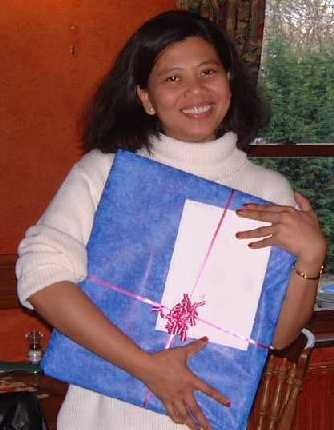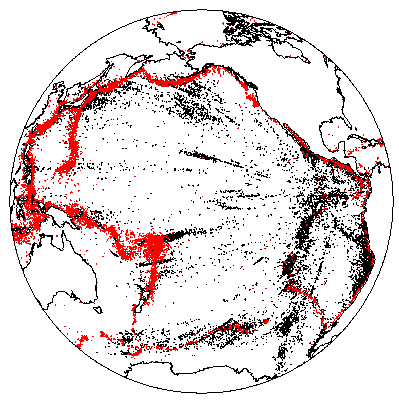Melda Banganan Heads Home to Manila
After working for two years at the ISC, Esmeralda Banganan rejoined the Philippine Institute of Volcanology and Seismology in January. While Melda was editing the Bulletin with Dmitry Storchak and Mamy Andrianarina, publication caught up with the nominal schedule and then advanced to nearly two months ahead of the schedule used in the past.
Each seismologist edits the Bulletin in his or her own "style". Melda edited exuberantly. Whether she was singing along with her Walkman or laughing out loud, there was rarely any doubt about whether or not Melda was around.
The ISC's system for preparing the Bulletin requires several passes through the data for each month, first to check the results from automatic processing and later, where the processing was questionable, to test alternative phase identifications and other hypotheses about earthquakes. Melda was particularly adept at the first pass, and provided us with quick feedback on just how many events would require extra attention each month.

Melda didn't continue with the ISC long enough to see us begin using our new editing system, which will reduce the need for manually keying edits and systematically compile edit logs. But her help in developing requirements and testing prototypes for the new system will benefit other seismologists editing the Bulletin for years to come.
Melda reports that she's happy to be doing "real time" seismology again with PHIVOLCS. For such an exuberant seismologist, perhaps the satisfaction from lugging seismometers and data loggers through the steamy jungles of Luzon outweighs the comfort of sipping a hot cup of tea at the ISC while scanning the latest processing results and waiting for another cold English morning to warm up.


